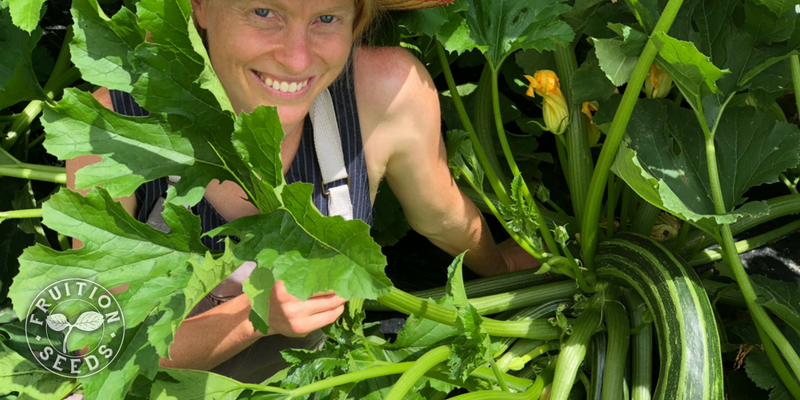Many people will proclaim, “Stink Bug!” when they see Gray Squash Bugs ambling about on their zucchini. Indeed, they are ‘true’ bugs and the stink is real when they’re crushed. Gray Squash Bugs are close relatives of the resident ‘stink bugs’ in your home.
A little knowledge goes a long way, so here is the biology you need to know plus the organic management keys to keep in mind.
It’s a Bug’s Life(cycle)
First, Gray Squash bug eggs are gorgeously shiny metallic bronze in clusters of about twenty eggs laid underneath squash leaves, often tucked along a vein. Cucumber beetle eggs are astonishingly similar, though there is more space between eggs (see below). Either way, if you see them, squish them!
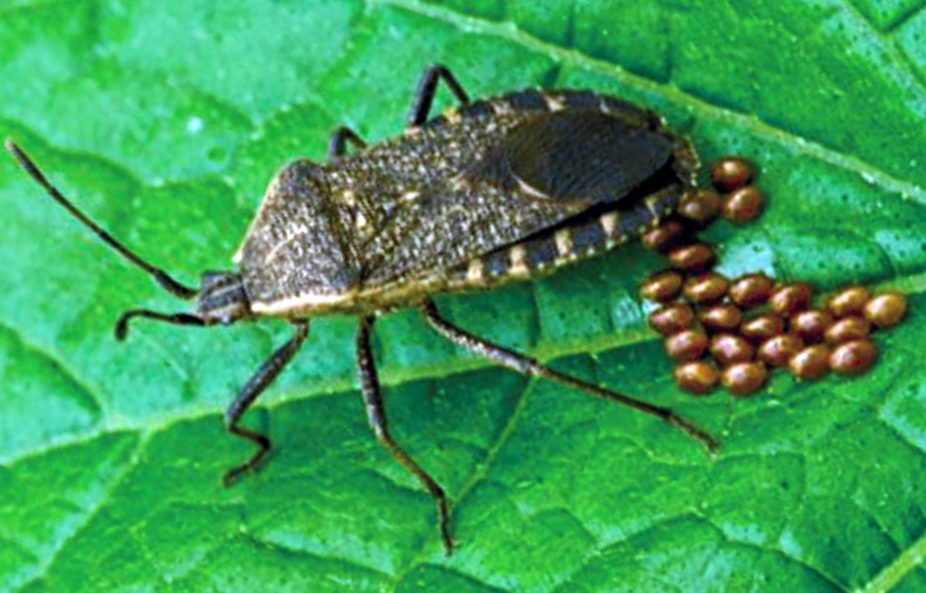
An adult squash bug laying her eggs. Photo credit to insectimages.org.
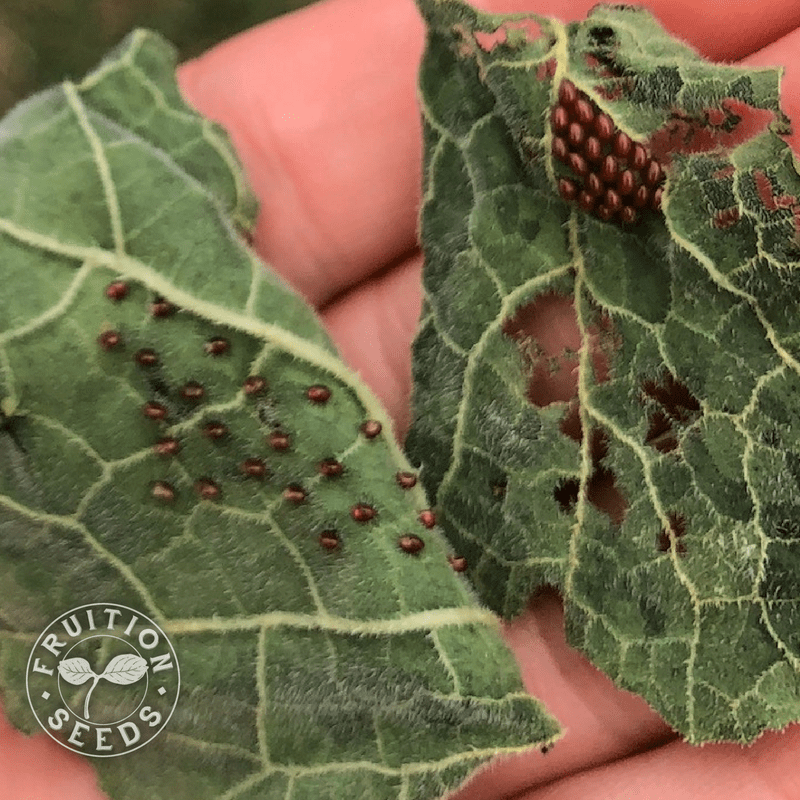
Gray Squash beetle eggs are laid a dense cluster (right) compared to Cucumber beetle eggs (left) which have more space between eggs. Both are most often on the underside of cucurbit leaves.
Eggs hatch in late summer into tiny pale green nymphs with jet-black legs (below), growing larger and more gray as they age. (I can relate, can you?!)
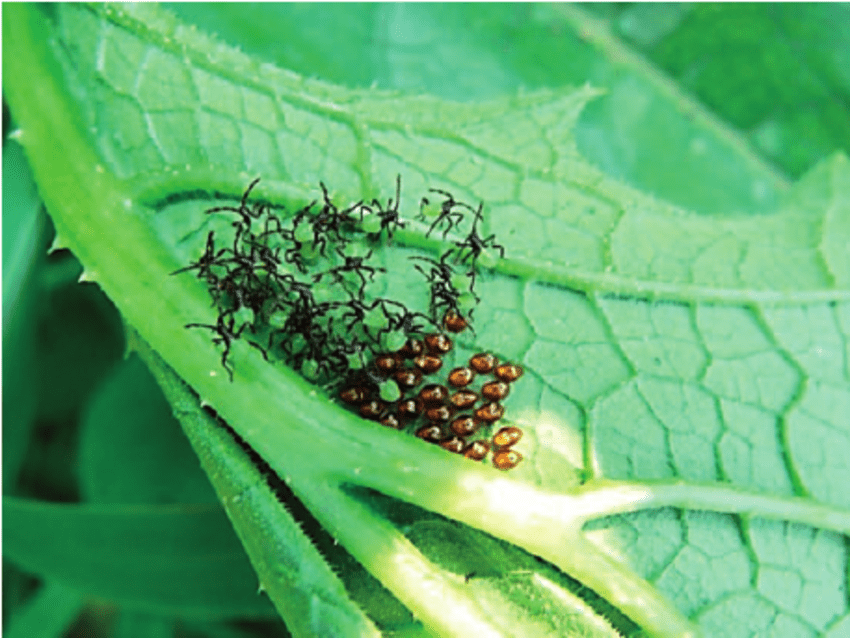
Young green-bodied nymphs emerge from eggs, photo credit insectimages.org.
About one month later, green-bodied nymphs morph into half-inch long, brown-gray adults. Their triangular thorax is distinctive as is their slightly intimidating ‘piercing-sucking’ mouthparts. They’re quite elusive when they first emerge in early July from their over-wintering grounds of plant debris, log piles and many other means of shelter.
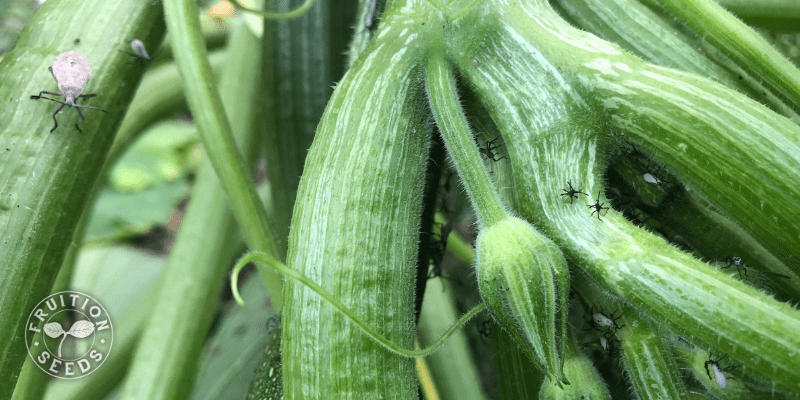
Young Gray Squash Bug nymphs frolic on the right, an adult saunters in the upper left.
Though secretive, two generations per season mean populations quickly explode, making increasingly hard to miss in your garden. By August, you’ll often find all three life-stages enjoying the shade of your squash.
Bad News Bugs
Here’s the thing: Both nymph and adult Gray Squash Bugs suck the sweet vascular fluids of your squash stems, simultaneously secreting highly toxic saliva into the plant.
Though they’re famously parading in your summer and winter squash, Gray Squash Bugs will feed on all members of the cucurbit family, including your watermelon, cantaloupe and cucumber, too.
Their feeding (and subsequent damage) occurs on foliage as well, leaving a pointillism of small white dots (‘stipples’) for you to observe. When you do, start looking for eggs to crush and other morphs to destroy! A few Gray Squash Bugs won’t make a tremendous impact but unchecked, their populations will quickly balloon out of control, sometimes significantly reducing your harvest.
5 Ways to Thwart Gray Squash Bugs
1) Floating row cover and hoops over your cucurbits helps them grow faster and protects them from Gray Squash Bugs as well as Cucumber Beetles. Just be sure to take the row cover off just before your plants flower, so they can be pollinated! By that time, they’ll be strong enough to resist the damage more than younger, more tender plants.
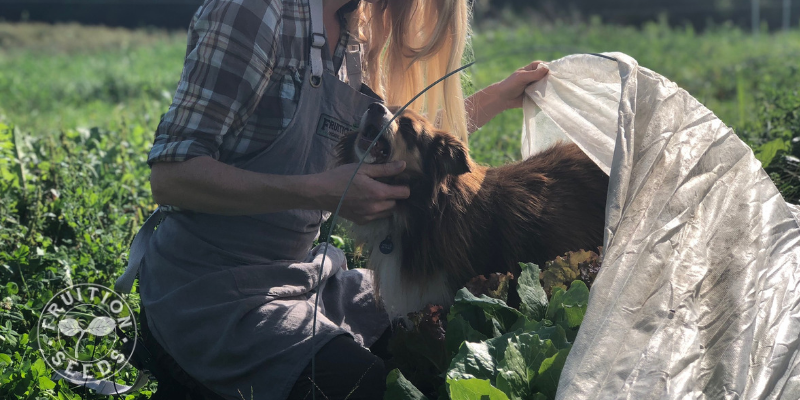
Floating row cover is easy to use and benefits so many crops in so many seasons!
2) Crush any bronze eggs you find! They’re small and dense, so to be completely confident you’ve destroyed them, tear the leaf off and don’t mess around.
3) Destroy any nymphs you find, too. Crush them by hand or whisk them into soapy water. Insecticidal soap and neem are organic sprays that kill nymphs, but they’ll kill other insects too, including the beneficial ones. Those sprays will not deter the adults, so please don’t be tempted.
4) At Mandala Farm in Maine, we laid some boards down close to the base of our squash. At night, Gray Squash Bugs would congregate underneath those boards and were easy to crush with our feet in the morning. Note: Mulch is marvelous though it can harbor populations of insects and diseases, Gray Squash Bug included. (This is only generally an issue with exceptionally large populations of bugs.)
5) Although they’ll generally find a place to survive the winter, removing plant debris and other easy locations for Gray Squash Bugs to overwinter can make a huge difference in reducing their destruction.
Now you know!
And now the (often dubious) glory of putting awareness into action.
We’ll be out in our gardens doing all these things this season, so don’t feel alone!
And Friends, be sure to check out our blog about Squash Vine Borer, the other destroyer of your cucurbits.
Sow Seeds, Sing Songs & Squish the Squash Bugs,
Best of luck cleaning up your cucurbits this season, Friends! We’re right there with you!


